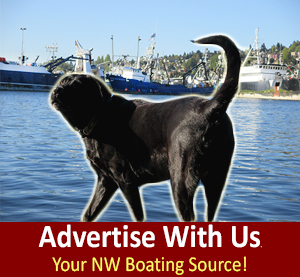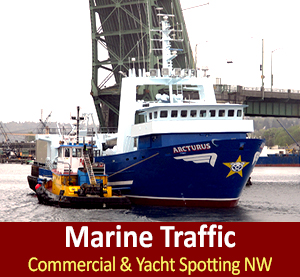 Alaska Bering Sea Crabbers
Alaska Bering Sea Crabbers
alaskaberingseacrabbers.org
Alaska Bering Sea Crabbers, ABSC – fish for King, Snow and Bairdi crab in the Bering Sea. They are also actively involved in scientific research, policy development, and marketing. They are committed to ensuring the long-term sustainability of their fishery. They are a non-profit, seafood industry trade association based in Seattle, Washington.
Alaska Bering Sea Crabbers represents crab harvesters who fish in the Bering Sea. Their members come primarily from Alaska, Washington, and Oregon. Many of these members are from multi-generational, family fishing operations. They are committed to ensuring that their fishery continues to provide for their families now and in the future.
Alaska Bering Sea Crabbers seek to continue to be vigilant stewards of their crab resources and the environment, provide economic stability to their industry and Alaska’s coastal communities, promote safety at sea, and produce premier crab products for their American and global customers. ABSC stands together to be actively involved in all aspects of crab fishery research, sound management and marketing. They are proactive advocates to benefit the crab resource and the independently owned businesses of Alaska’s Bering Sea crab fisheries. By participating in the regulatory process, they can continue to make a positive difference for the fishing fleets and families that depend on their crab fisheries for their livelihood.
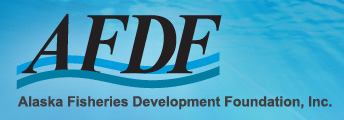 Alaska Fisheries Development Foundation
Alaska Fisheries Development Foundation
afdf.org
Alaska Fisheries Development Foundation, AFDF – serve the Alaska seafood industry. AFDF represents harvesters, processors and support sector businesses. AFDF works on behalf of industry to identify problems common to the seafood industry and collaborates with coastal communities, research institutes and government agencies to develop effective solutions with shared benefits.
AFDF is a collaboration of harvesters, processors, and support sector businesses dedicated to making opportunities out of challenges. AFDF identifies problems common to the Alaska seafood industry and collaborates with coastal communities, research institutes and government agencies to develop effective solutions with shared benefits.
Alaska Fisheries Development Foundation’s goals include development of surimi processing in Alaska, development of technology to convert fish waste to oil with the ability to scale the processing to the amount of waste created, and research on trawl gear alterations to reduce salmon and halibut bycatch. Cooperative research to develop salmon baby food with Ocean Beauty and Beech Nut. In 2013, they launched the Fishing Vessel Energy Audit Pilot Project which aims to help commercial fishermen save fuel and money through increased efficiency on vessels.
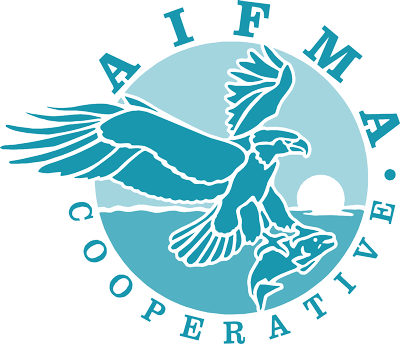 Alaska Independent Fishermen’s Marketing Association
Alaska Independent Fishermen’s Marketing Association
aifma.org
Alaska Independent Fishermen’s Marketing Association, AIFMA – is a member-funded association committed to the fishermen and the salmon resource of the Bristol Bay region. AIFMA’s mission is to protect the renewable salmon resource and promote economic sustainability for commercial salmon permit holders in Bristol Bay. They have been steadfast in its commitment to fishermen and the salmon resource of the Bristol Bay region. AIFMA is comprised of and funded by fishermen memberships. Bristol Bay fishermen have benefited from the hard work of AIFMA members who have served on the AIFMA board and its committees.
Alaska Independent Fishermen’s Marketing Association’s ongoing goals inglude the protection and promotion of the Bristol Bay salmon resource and fishermen’s livelihoods, Endeavors to protect the environment by opposing the proposed gold and copper Pebble Mine in the Bristol Bay watershed, and offshore oil and gas development in the Bristol Bay/Bering Sea region and offshore aquaculture in the United States. They also seek to protect the salmon resource by decreasing foreign and domestic interception fisheries. AIFMA represents fishermen’s interests in political and regulatory arenas such as Bristol Bay and Area M Board of Fisheries Hearings and in Washington DC, and supports efforts to improve salmon quality, diversify markets and increase fishermen’s ex-vessel prices. They also support funding of fisheries research, management and genetic stock ID work.
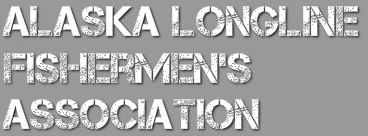
Alaska Longline Fishermen’s Association
Alaska Longline Fishermen’s Association, ALFA -A non-profit association of independent commercial longline vessel owners and crewmembers who are committed to continuing the sustainable harvest of sablefish, halibut, and groundfish, while supporting healthy marine ecosystems and strong coastal communities through resource stewardship and participation in federal, state, and local forums.
Alaska Longline Fishermen’s Association has developed and cooperated in many research projects to address important fishery and ecological issues including participation in the Southeast Alaska Sperm Whale Avoidance Project, developing a voluntary logbook program for sablefish vessels which allows fisheries data to be incorporated into the sablefish apportionment formula, testing light weight seabird avoidance devices appropriate for small longline vessels, developing low bycatch gear for underutilized rockfish species, developing a real time bycatch reporting network to decrease bycatch in the halibut fishery, and developing identification aids to help processors correctly identify rougheye and shortraker rockfishes.

Alaska Marine Conservation Council
akmarine.org
Alaska Marine Conservation Council’s, AMCC- mission is to protect the integrity of Alaska’s marine ecosystems and promote healthy, ocean-dependent coastal communities. They work to protect and restore the marine environment through sustainable fishing practices, habitat protection, and local stewardship. They support an ecosystem-based approach to research and marine resource management that incorporates the best science available, experiential knowledge, and the wisdom of tradition.
A healthy and diverse marine ecosystem has intrinsic value. People are a part of and depend upon a healthy and diverse marine ecosystem and have a responsibility to maintain it. Marine resource management must be comprehensive and incorporate indigenous, scientific, and experiential knowledge. The utilization of resources in the marine ecosystem requires management to prevent over-exploitation, destruction, and neglect of these resources and associated habitats. Coastal residents have a valuable and unique perspective on the marine ecosystem and the right to meaningful and influential participation on decisions. Fisheries management policies should ensure adequate, intergenerational access to fishing opportunities for local residents and communities.
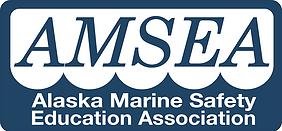
Alaska Marine Safety Education Association
amsea.org
The Alaska Marine Safety Education Association, AMSEA – is a non-profit corporation consisting of a nationwide network of marine safety instructors supported by a main office in the port community of Sitka, Alaska. This network of marine safety instructors has expanded from its beginnings in Alaska to a network that spans all 4 U.S. coasts and reaches as far as American Samoa. These network instructors are supported by AMSEA with marine safety training equipment, educational materials and a curriculum that is relevant, hands-on and United States Coast Guard accepted.
Since 1985 AMSEA has trained over 185,000 people in marine safety, including commercial fishermen, recreational boaters, subsistence fishermen, youth and personnel from state, federal and private agencies. AMSEA has also conducted more than 90 Marine Safety Instructor Training Courses and trained more than 1,200 instructors in ports across the country. Training offered includes Marine Safety Instructor Training, Drill Conductor Training, Vessel Stability Training, and Surviving Outdoor Adventures. AMSEA trains youth educators to deliver the curriculum in schools or other youth education environments. AMSEA courses can be customized to meet the needs of boaters and the boating practices of a specific area or industry.
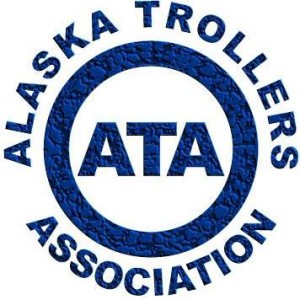
Alaska Trollers Association
aktrollers.org
Alaska Trollers Association, ATA- represents Alaska’s commercial salmon trollers. Their members are professional hook and line fishermen and other support businesses dedicated to sound resource development, fair fishery allocations, and healthy communities. They promote the delivery of wholesome and sustainable, fine quality seafood to the marketplace.
ATA maintains a close working relationship with fishery managers and others who help protect the resource. They occasionally take on large projects to help improve data and support the fleet, like the ATA logbook and call-in programs, or participate in cooperative projects such as efforts to help restore habitat in the Klawock watershed, or recover and report illegal high seas fishing gear.
Alaska Trollers Association is actively engaged in the current fish farm debate in both the US and Canada and a few years back worked with processors to develop the Real Salmon marketing promotion, which helped recapture some of their hook and line market share that had been affected by allocations and farmed fish. ATA also tends to a long list of other industry issues.
 At-Sea Processors Association
At-Sea Processors Association
atsea.org
The At-Sea Processors Association, APA – represents U.S.-flag catcher/processor vessels that participate in the healthy and abundant groundfish fisheries of the Bering Sea/Aleutian Islands management areas and in the west coast Pacific whiting fishery. Their principal fishery is the mid-water pollock fishery – the largest fishery in the U.S. The ability to both harvest and process at sea allows them to produce affordable seafood products that meet the highest standards of quality. Their primary products are fillets, surimi, roe and fishmeal.
APA member vessels each carry two fishery observers to monitor harvests and collect scientific data and information. The North Pacific observer program is funded by the fishing industry at an annual cost of approximately $13 million.
Since the U.S. established a 200-mile fishing zone in 1976, pollock harvests have averaged 2.5 billion pounds annually on a sustainable basis. APA catcher/processors fish for Alaska pollock in U.S. waters of the Bering Sea. This fishery alone accounts for almost one-third of all U.S. seafood landings by weight. At-Sea Processors Association vessels do not participate in the much smaller Alaska pollock fishery conducted in the Gulf of Alaska. The At-sea Processors Association is committed to working with fishery managers, scientists, environmentalists, and members of the fishing industry to ensure the continued health and sustainability of their marine resources.
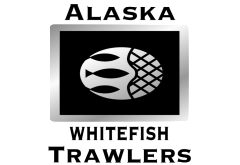
Alaska Whitefish Trawlers Association
alaskawhitefishtrawlers.org
The Alaska Whitefish Trawlers Association, AWTA of Kodiak, AK – represents the interest of the Gulf of Alaska (GOA) shore-based, catcher-vessel trawl industry and has been active in Kodiak for over four decades. Our membership consists of the local trawlers that deliver groundfish to the City of Kodiak. Our focus is on the harvesting of the abundant groundfish resources in the GOA using sustainable fishing practices that ensure the preservation of our fishery while minimizing negative impacts on other fisheries. As harvesters, we play a significant role in making Kodiak, AK consistently one of the top fishing ports in the nation.
Gear changes over the last decade like Excluders for non-target species, changes in mesh size, and movement towards more Pelagic (Midwater) gear have made trawling the most efficient and technologically advanced fishery in the GOA. They have used the data from over two decades of on board observers to identify their issues and vastly improve on them.
Keeping the Gulf of Alaska fisheries healthy and sustainable is a top priority for the Alaska Whitefish Trawlers Association. Their fleet has worked together, along with National Marine Fisheries Service, Alaska Groundfish Data Bank, biologists, and at-sea observers to ensure the science is available so fisheries managers, lawmakers, and the “Boots on Deck” fishermen will be able to make the most educated decisions regarding their fishery.

Bering Sea Fishermen’s Association
Bering Sea Fishermen’s Association, BSFA – was designed to unify a variety of people, issues and goals. It began with 150 fishermen from over 30 villages in western Alaska ranging from Bristol Bay to Kotzebue Sound. These fishermen united to become more involved in new fisheries that were developing in their backyard, and to build an organization that was concerned with helping local fishermen gain full economic benefits from existing local commercial fisheries.
The major goals of the Bering Sea Fishermen’s Association are to help Western Alaskan fishermen get started in the herring fishery. They also seeked to help take the opinions and ideas of western Alaskan fishermen to the State Legislature and to Congress, work with state and federal fisheries agencies to help local Bering Sea fishermen, and help locate and develop sources of financial aid for Bering Sea fishermen. They also inform fishermen of new political, economic and technological developments which affect their livelihoods.
Bering Sea Fishermen’s Association focuses on the activities of Alaska’s fisheries. They support and provide funding for research projects to non-governmental organizations in western Alaska in order to support advanced learning about their fisheries resources. They further strengthen the region through coalition building and leadership skill building. Bering Sea Fishermen’s Association has been hosting exchanges between regional residents, researchers, and policymakers since 1992. They provide significant expertise in issues relevant to their marine and freshwater fisheries and their environments.
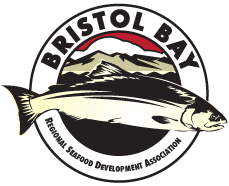 Bristol Bay Regional Seafood Development Association
Bristol Bay Regional Seafood Development Association
bbrsda.com
Bristol Bay Regional Seafood Development Association, BBRSDA – is the only fleetwide organization specifically mandated to advance the quality and market-success of Bristol Bay salmon, address fishery-related infrastructure requirements in the Bristol Bay region, and create research and education programs to ensure long-term success of the world’s largest and most valuable salmon fishery.
A member-elected board manages and directs the Bristol Bay Regional Seafood Development Association, and an executive director works with the board to carry out its policies. Under their bylaws, the elected board may also appoint up to three ex-officio members to represent non-assessment-paying entities that have a substantial interest in the fishery. Notices of elections for board positions are communicated to all members via email updates and newsletters. By state law, every drift permit holder operating in Bristol Bay is a member in good standing of this vital stakeholder organization. As they say at BBRSDA– if you run a boat in Bristol Bay, they’re part of your crew.
Bristol Bay Regional Seafood Development Association is solely focused on improving the market value of Bristol Bay sockeye. Theirs is the most valuable salmon fishery in Alaska, and it is 98% sockeye by value. In 2004, the last year Bay fishermen “paid into” ASMI, their assessment generated about $750,000. That money was pooled with funds from other regions, then used to promote multiple seafood species statewide. Under the BBRSDA structure, their members – both directly and through their representatives on the board – determine how their assessment will be spent, and they can direct it towards more than just marketing. But whatever projects they allocate it to, they know that virtually all of their 1% assessment is dedicated to improving the market value of just one product – the fisherman’s. That’s the Bristol Bay Regional Seafood Development Association bottom line.’
 Bering Sea Fisheries Research Foundation
Bering Sea Fisheries Research Foundation
bsfrf.org
Bering Sea Fisheries Research Foundation, BSFRF – is a non-profit research foundation funded by both industry stakeholders and management agencies to provide a means for industry members, fisheries managers and crab scientists to interact. It has integrally involved researchers from federal (National Marine Fisheries Service) and state (Alaska Department of Fish and Game) agencies, university scientists (University of Washington, University of Alaska Fairbanks), graduate students, as well as international crab experts (Department of Fisheries and Oceans, Canada).
The BSFRF was successfully formed by commercial crab industry leaders in 2003 with the encouragement of National Marine Fisheries Service and has undertaken a number of projects in a well-integrated effort. BSFRF has taken an active role in working with both NMFS and Alaska Department of Fish and Game to improve the scientific information used in the annual assessments of Bering Sea crab stocks.
Bering Sea Fishers Research Foundation’s research priorities are identified by both National Marine Fisheries Service and Alaska Department of Fish and Game as areas that need further focus but the agencies lacked the funding to pursue the answers. Operating under a memorandum of understanding, the BSFFRF is able to collaborate with both National Marine Fisheries Service and ADF&G to conduct and analyze the field work which can then be incorporated in their crab stock assessment models. The Alaska Bering Sea Crabbers are hopeful that the crab stock assessment models that they are so dependent upon can be improved with this research resulting in healthy populations of crab stocks in the Bering Sea for future generations of crab fishermen.
 Central Bering Sea Fishermen’s Association
Central Bering Sea Fishermen’s Association
cbsfa.com
Central Bering Sea Fishermen’s Association, CBSFA – and other Saint Paul Island, AK entities have been continuously addressing the halibut concerns and are active in the IPHC and North Pacific Fishery Management (NPFMC) processes. Action has been initiated at the NPFMC to reduce halibut bycatch and expansion to the current IPHC survey is planned for the future. While there is still uncertainty and a lot of work to be done, they hope that the new regulatory and stock assessment developments will lead to increases in the halibut catch limits and help halibut stocks remain viable for the future.
Central Bering Sea Fishermen’s Association seeks to develop a viable, self-sustaining, independent fisheries development organization that, on behalf of the local fishermen, the community of St. Paul as a whole, and in cooperation with other Bering Sea Coastal Communities and CDQ groups, will ensure key participation in fishery related development in the region while exercising proper resource stewardship.
In 2014, CBSFA provided annual payments of $4000 to energy suppliers or housing entities on behalf of community elders age 55 and over. Over the years, CBSFA has increased its contributions to help alleviate the increasing cost of living in rural Alaska. St. Paul’s residents continue to be affected by the rising cost of living in many ways. CBSFA created the Elder Subsistence Halibut and Crab Donation Program, which disburses halibut portions and crab to community elders twice a year. Efforts to expand the program were made possible through cooperation with SeaShare, an organization dedicated to providing seafood as a source of hunger-relief. CBSFA was able to acquire and disburse Chinook and Chum salmon received from SeaShare.
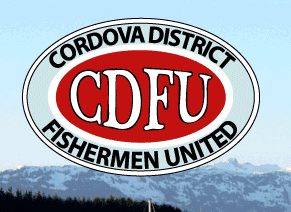
Cordova District Fishermen United
Cordova District Fishermen United, CDFU- is a non-profit organization dedicated to preserving, promoting and perpetuating the commercial fishery in Area E. CDFU has a board of up to 13 experienced commercial fishing permit holders in 4 separate divisions: Gillnet, Groundfish, Seine and Herring. CDFU is governed by organizational bylaws, which determine eligibility for Board membership. Board seats are staggered, and any Prince William Sound commercial fishery permit holder can run for a seat in the division in which they hold a permit.
Cordova District Fishermen United’s structure is divisional, enabling each gear group to deal with gear-specific and allocative issues without comprising the function of the entire organization to address issues relevant to all commercial fishermen. It is important to note that CDFU, as an organization, does not take positions on gear-group allocations, but rather leaves that to each specific division.
 Deep Sea Fishermen’s Union of the Pacific
Deep Sea Fishermen’s Union of the Pacific
The Deep Sea Fishermen’s Union of the Pacific is an independent union and the oldest organization of crewmen and skippers in the North Pacific. The Union has a distinguished, positive and progressive history as well as an unbroken series of accomplishments on behalf of working fishermen. They are no longer a Union for longliners only. They have opened their membership to crabbers and other fisheries needing their help.
The Union, since 1912, has focused on crewmen and skipper rights, safety and professionalism, the long term health of the fishery and an always high-quality product. For added impact they are affiliated with the AFL-CIO, the Sailor’s Union of the Pacific, the Washington State Labor Council and the King County Labor Council. Each of them has come to their assistance in their legislative fights for the laborer who has put his/her sweat equity into harvesting the bounties of the Sea.
Traditionally, the Union has been active in the management of the halibut fishery. They were among the groups that helped to establish the International Pacific Halibut Commission when the need arose in the 1920’s. They have worked for different programs of conservation and fleet management through government and self-regulation. Many would see this site for help with the latter part, as fleet management can be a difficult thing to manage. Today, especially since the introduction of the 200-mile limit in 1976, they continue to be active in that process, with long-term productivity as the primary goal.
The Union has also been one of the major forces involved in the takeover of the Alaskan sablefish resource from the traditionally Japanese fishery. They lobbied strongly for the chance to fish that stock and their boats then proved their ability to catch it.
All fisheries are interrelated. Stocks and fleets of all kinds affect each other. The Union strongly believes in management practices that recognize this fact and that promote the first mandate of the Magnuson Fishery Conservation and Management Act: to harvest fully the available stocks of fish while still conserving the resource for future fishing. Union fishermen are changing from an almost exclusive halibut, multi-species longline fishery into a diversified, fixed gear group including the crab fishery. They are participating not only in this trend but also in the management that will promote the long-term health of these industries, one of efficient operations and of quality products.

Fishing Vessel Owners’ Association
The Fishing Vessel Owners’ Association, FVOA- is a trade association. The Association was formed to represent the needs of halibut boat owners involved in longline fishing in the North Pacific. The fishery began in Seattle and Vancouver, B.C. between 1870 and 1874 when halibut was shipped fresh to San Francisco on steamers. It wasn’t until 1888, when the Northern Pacific Railway was completed that the halibut fishery came into its own and markets were opened eastward to Chicago.
The Association’s members today are longline fishermen. The principal species harvested are halibut, sablefish, pacific cod, rockfish and turbot. The Association is proud of its past history, both on international and domestic issues. The Association was one of the original organizations that helped consolidate Canadian and U.S. fishermen to form the International Pacific Halibut Commission in 1924. The Association was also significantly involved in the original negotiations that formed the International Pacific Fisheries Commission between Japan, Canada and the U.S. in 1952.
The FVOA currently represents its members before the Pacific Council and North Pacific Council. The FVOA has sponsored federal legislation to make the cost of observer coverage more equitable for all participants in the fishery and continues to work on bycatch issues. The Association feels strongly that separating foreign harvesting control of our U.S. fishery resources from foreign market control has lead to the Americanization of such species as herring, tanner and king crab, sablefish and Pacific Cod. Furthermore, the Association feels that, thanks to the late Senator Warren G. Magnuson, efforts toward establishing extended jurisdiction, and by virtue of former President Ford’s signing of the 200-Mile Legislation, plus President Regan’s establishment of the Exclusive Economic Zone, our fishery resources are now a bonafide American birthright, i.e., a birthright that American labor and vessels should harvest and process.
 Groundfish Forum
Groundfish Forum
The Groundfish Forum is a trade association that currently represents 5 trawl companies that fish for flatfish such as rock sole, yellowfin sole, flathead sole, as well as Atka mackerel, Pacific Ocean Perch and Pacific cod in the Bering Sea, Aleutian Islands, and Gulf of Alaska. These companies own the majority of the H&G vessels in the North Pacific. These vessels range from 105 to 295 feet in length and due to their size, they only perform heading and eviscerating of fish, instead of processing fillets or surimi.
The Groundfish Forum knows solutions needed to be effective, while maintaining the efficiency and economic margins of their industry to the greatest degree possible. Groundfish Forum’s mission is to inform state and local government officials of the contributions made by the H&G fleet to the economies of Alaska and the Pacific Northwest. It has been critical that officials in the Pacific Northwest, especially Alaska, recognize the magnitude of the economic impact generated by their industry to also understand the potential loss of jobs, revenue, and the ripple effects on service and public sectors if forces controlling the fishery management system continue to promulgate regulations that needlessly attack their sector.
Groundfish Forum has also recognized the importance of resource conservation and continues to keep an open approach to working with regulators, government officials, and the public in order to keep their industry economically viable in the years to come.
 Kodiak Fishermen’s Wives and Associates
Kodiak Fishermen’s Wives and Associates
Kodiak Fishermen’s Wives and Associates is tribute to the fishermen who have lost their lives at sea and a reminder that commercial fishing is their country’s most dangerous occupation. Founded by local fishermen’s wives, this community service group works with others close to the Kodiak commercial fishing industry to promote the consumption of Alaska seafood and foster safety within the fleet. In addition, the group maintains the Kodiak Fishermen’s Memorial, and sponsors an annual memorial service and survival suit race during the Kodiak Crab Festival.
This organization was established for the following purposes: To support and assist all diversified fisheries in their area, continue efforts for upgrading the position of the American fisherman and to promote seafood public relations, and continued effort to promote the sales of fishery products. They also support and/or assist in community projects, support safety and survival education for fishermen, and support the Fishermen’s Memorial Park in Kodiak.
![]() Kenai Peninsula Fishermen’s Association
Kenai Peninsula Fishermen’s Association
The Kenai Peninsula Fishermen’s Association, KPFA – is one of the largest trade organizations of its type in Alaska. Their 300 plus members are primarily setnetters, but also include drifters and seiners who fish in Cook Inlet. On some sites, four generations of families participate together in this fishery. They represent an industry where 84% of the participants are Alaskan residents, 56% of whom reside on the Kenai Peninsula year round. The primary species harvested in Cook Inlet, by an overwhelming margin, is Sockeye Salmon.
Kenai Peninsula Fishermen’s Association is involved in a broad range of fisheries and environmental issues. They represent the interests of commercial fishermen before the Alaska Board of Fisheries, North Pacific Fishery Management Council, and have played a major role keeping their fishery biologically and economically sound.
KPFA’s main goal is Ensuring the Sustainability of our Fishery Resource. We strive to be fair and accessible to all fisheries gear types and areas within Cook Inlet waters. A non-profit association, we are operating under the rules governing a trade association. Primarily a set-net representation organization, we do not restrict membership to any one gear type. KPFA is actively involved with the community groups. We believe the primary focus of revitalization should take into consideration the social, historical and economic concerns of the regional commercial fishing families.
Kenai Peninsula Fishermen’s Association actively participate in a variety of organizations to promote and protect their industry, including the Cook Inlet Aquaculture Association, the Cook Inlet Regional Planning Team, Fish & Game Advisory Committees, the Kenai River Special Management Area Advisory Board, Cook Inlet Regional Citizen’s Advisory Council, Beluga Recovery Team, and the United Fishermen’s Association.
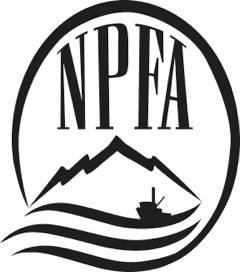
North Pacific Fisheries Association
North Pacific Fisheries Association, NPFA- represents commercial fishermen and fishing families who harvest halibut, salmon, black cod, pacific cod, crab and herring. Headquartered in Homer, their members fish throughout the waters off Alaska – from Dixon Entrance to Adak to St. Matthew Island.
The North Pacific Fisheries Association’s primary function for two decades was as a marketing entity. It served as a vehicle for negotiating salmon prices in both the Cook Inlet seine and gillnet commercial fisheries. As the post statehood salmon fisheries expanded and commercial fishing in general developed the scope of NPFA’s role expanded to include local crab price negotiations.
With the advent of halibut IFQ’s, NPFA became active in both halibut and ground fish topics, working to keep its members and surrounding area fishermen up to date on the evolving management structure. NPFA is and has been a board member of United Fishermen of Alaska and is active in all aspects of Alaska’s management processes sending representative to the Alaska Board of Fish meetings, International Halibut Commission meetings, North Pacific Fisheries Council meetings, Cook Inlet Aquaculture Association Board of Directors, and Homer Port and Homer Harbor Commissions, among others.
 North Pacific Fishery Management Council
North Pacific Fishery Management Council
npfmc.org
North Pacific Fishery Management Council, NPFMC – is one of eight regional councils established by the Magnuson-Stevens Fishery Conservation and Management Act to manage fisheries in the 200-mile Exclusive Economic Zone. There are three major meetings that make up a typical North Pacific Fishery Management Council meeting. The Scientific and Statistical Committee (the SSC) and the Advisory Panel (AP) take up the same agenda the Council does-they just begin two days in advance so they can provide their recommendations to the Council. The SSC is made up of scientists and economists and the AP’s membership covers a variety of fishing industry sectors as well as conservation groups. Representatives on the SSC, Council, and AP are from Oregon, Washington, and Alaska.
NPFMC has developed a guide for the variety of people who want a voice in fisheries management issues. It is designed for those unfamiliar with fisheries management, as well as those who are already involved in the process, and can be used to guide you through a formal Council meeting or to get involved in management issues when there is no time to attend Council meetings.
The North Pacific Fishery Management Council identifies priorities for research, over the next 1 to 5 years, as those activities that are the most important for the conservation and management of fisheries in the Gulf of Alaska, Aleutian Islands, eastern Bering Sea, and the Arctic. This listing of priorities has two purposes: to meet the requirements of the revised Magnuson-Stevens Act for the Councils to identify 5 year research needs, and to provide guidance on research priorities to the research community and funding agencies. Research priorities are organized into four categories: critical ongoing monitoring, urgent, important (near term), and strategic (future needs). These categories place less emphasis on the relative value of research topics and more emphasis on the correspondence of research to the Council’s time horizon of management concerns.

North Pacific Fishing Vessel Owners’ Association
North Pacific Fishing Vessel Owners’ Association, NPFVOA- are dedicated to safety education, hands-on training, and environmental issues as they relate to public health and safety. NPFVOA Vessel Safety program provides USCG-approved STCW courses and specialized hands-on courses to meet all your safety needs. They offer Basic Safety Training, Medical Care Provider, Stability, Navigation, Drill Instructor Workshop, HAZWOPER, and numerous other courses, as well as top of the line Safety DVDs including the new Safety and Survival DVD.
Once Congress passed the Commercial Fishing Vessel Safety Act in 1988, which mandated safety equipment and emergency drill training, the North Pacific Fishing Vessel Owners’ Association developed a course to teach individuals how to conduct their emergency drills – the Drill Instructor Workshop. Since then, NPFVOA has strived to facilitate a high level of safety awareness in the North Pacific fishing fleets. As a non-profit, membership-based organization, NPFVOA works very closely with regulatory agencies such as the Coast Guard, OSHA, and the Environmental Protection Agency, and keeps its members apprised of issues important to the safety of their crews and vessels.
After more than 27 years of providing safety awareness and education to over 41,000 members of the commercial fishing industry, NPFVOA continues to develop programs that meet its evolving demands. As the commercial fishing industry continues to evolve and the regulations become more sophisticated and complex, NPFVOA will continue to be on the forefront of safety training technology and development.

Northern Southeast Regional Aquaculture Association
Northern Southeast Regional Aquaculture Association, NSRAA- was created to assist in the restoration and rehabilitation of Alaska’s salmon stocks, and to supplement the fisheries of Alaska by utilizing artificial propagation to enhance the availability of salmon to all common property users, without adversely affecting wild salmon stocks.
NSRAA is committed to promoting the wise use of Alaska’s salmon resources through education, sustainable harvest management, the maintenance, protection and promotion of high quality fish habitat, and the utilization of the highest scientific standards, in carrying out its mission.
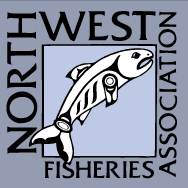
Northwest Fisheries Association
Northwest Fisheries Association, NWFA- provide NWFA members an environment in which to network business opportunities, and to supply them with current information on state and federal policy, fish standards and quality control, transportation, and tax and environmental issues. The NWFA currently represents approximately 180 member companies, including primary and secondary seafood processors, seafood brokers and distributors, and direct-support industry members. These businesses, primarily from Washington, Alaska and Canada, produce a wide variety of fish and shellfish products, and distribute them worldwide.
Northwest Fisheries Association is comprised of approximately 180 member companies involved in the seafood and seafood support industries, primarily in Washington, Oregon, Alaska and British Columbia.
Joining the NWFA provides an excellent opportunity to become more involved with the seafood industry, stay better informed of critical industry issues, develop important business relationships, and have a good time.
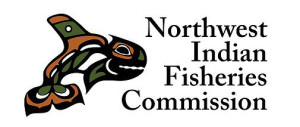
Northwest Indian Fisheries Commission
Northwest Indian Fisheries Commission, NWIFC- is a support service organization for 20 treaty Indian tribes in western Washington. Headquartered in Olympia, the NWIFC employs approximately 65 people with satellite offices in Burlington and Forks. The role of the NWIFC is to assist member tribes in their role as natural resources co-managers. The commission provides direct services to tribes in areas such as biometrics, fish health and salmon management to achieve an economy of scale that makes more efficient use of limited federal funding. The NWIFC also provides a forum for tribes to address shared natural resources management issues and enables the tribes to speak with a unified voice in Washington, D.C.
Northwest Indian Fisheries Commission is primarily a support service organization that provides direct services to its member tribes to assist them in their natural resource management efforts. Approximately 70 full-time employees provide services to member tribes through an economy of scale that enables tribes to efficiently use the limited federal funding provided for their natural resource management activities. In addition, the commission provides services to non-member tribes through coordination of several statewide programs.
NWIFC is headquartered in Olympia, Washington, with satellite offices in Forks, Mount Vernon and Kingston. Four departments comprise the commission: Administration, Fishery Services, Habitat Services and Information and Education Services.
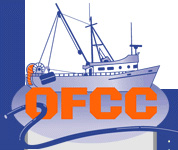
Oregon Fishermen’s Cable Committee
Oregon Fishermen’s Cable Committee promotes communication, coordination and cooperation between members of the commercial fishing industry and undersea fiber-optic cable industry so that they can amiably discuss and resolve concerns. The OFCC works with undersea cable owners to route cables for maximum burial in the fishing grounds and with the fishing industry to safely fish around cables. The OFCC provides submarine cable routes in popular marine navigation software formats to West Coast trawlers.
The Oregon Fishermen’s Cable Committee is constituted of Oregon commercial fishermen and fiber optic cable representatives, reviews and investigates the written claim for compensation including, if necessary, requesting an inspection of the cable by an underwater remote operated vehicle. If the Oregon Committee later denies the claim because of fraud, misrepresentation or failure to follow the required procedures, the payment to the approved suppliers for the sacrificed gear is treated as a loan to the fisherman that may have to be repaid by the fisherman.
The Oregon Fishermen’s Agreement is the Magna Carta between member West Coast commercial fishermen and fiber optic cable companies. The OFCC intends to maintain, and build upon, its long history of collaborating with the fishing and undersea telecommunications industries in order to reach mutually satisfactory solutions to ocean- use issues.

Pacific Seafood Processors Association
Pacific Seafood Processors Association, PSPA- is a nonprofit seafood industry trade association. Its corporate members are major seafood processing companies with operations in Alaska and Washington. PSPA was founded in 1914 to foster a better public understanding of the importance of the seafood industry, and has been in continuous and active existence since that time.
Pacific Seafood Processors Association member companies purchase, process, and market hundreds of millions of pounds of salmon, pollock, crab, cod, halibut, and other species of Alaska seafood. They have made large capital investments in the communities where they operate. They provide thousands of direct and indirect jobs and markets to thousands of commercial fishermen, and contribute millions of dollars in tax revenues that provide important services and support the quality of life in Alaska and Washington.
PSPA is committed to the sound management and long term health of fishery resources and protection of the marine environment upon which those resources depend. They are also committed to providing good jobs and a safe, rewarding work environment to their employees, economic benefits to the region; and high quality, healthful seafood products to consumers. PSPA is proud to represent their member companies and support them in fulfilling these important commitments.
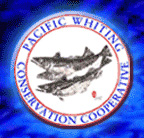 Pacific Whiting Conservation Cooperative
Pacific Whiting Conservation Cooperative
Pacific Whiting Conservation Cooperative, PWCC is comprised of the companies licensed to operate in the at-sea catcher-processor sector of the Pacific whiting fishery. PWCC was formed to promote rational harvest, optimal utilization, and minimal waste in the whiting fishery. By working cooperatively, Pacific Whiting Conservation Cooperative member companies have greatly improved product recovery rates and significantly decreased bycatch, notably of salmonids and rockfish, in our sector of the whiting fishery. PWCC also funds and performs research to generally improve the West Coast groundfish fishery.
Fish harvesting practices in the catcher-processor sector of the Pacific whiting fishery changed dramatically during the 1990’s. The catcher-processor fishery evolved from an Olympic-style “race for fish” into a fish harvesting cooperative that emphasizes resource conservation and efficient production.
To make optimal use of the annual Pacific whiting allowable harvest allocated to the catcher-processor sector, Pacific Whiting Conservation Cooperative members negotiated the apportionment of this allocation on a company-by-company basis. The agreement is enforced by a contract signed by the each of the cooperative members. The PWCC fishing cooperative has ended the “race for fish” in the catcher-processor sector, resulting in decreased bycatch and waste, improved product quality , and reduced fishing effort. For example, since formation of the PWCC, only 6 or 7 of the 10 eligible catcher-processor vessels have participated in the fishery, providing a significant reduction in fishing effort. In addition to direct benefits to PWCC members, the cooperative also sponsors scientific research that benefits the West Coast groundfish fishery. PWCC members are assessed a tonnage fee that is used to fund scientific research, including funding stock assessment and bycatch avoidance programs
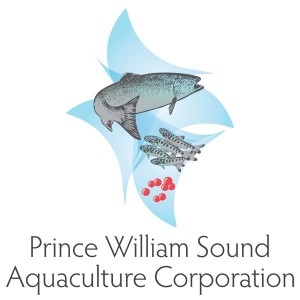
Prince William Sound Aquaculture Corporation
Prince William Sound Aquaculture Corporation, PWSAC- was founded by a local commercial fishermen’s organization to optimize Alaska’s wild salmon resources. PWSAC produces hatchery-born, ocean-raised wild salmon for the commercial, sport, personal use and subsistence fisheries in the Prince William Sound and Copper River regions.
With headquarters in Cordova, Alaska, PWSAC operates four remote salmon hatcheries in Prince William Sound and one on the Copper River in Paxson. About 600 million salmon fry and smolt are produced for release into Pacific waters. The returning adults benefit all user groups.
PWSAC operations are financed through the sale of fish to processors and a salmon enhancement tax paid by commercial fishermen.

Purse Seine Vessel Owners’ Association
Purse Seine Vessel Owners’ Association, PSVOA- was established in 1936 to promote the Puget Sound purse seine fleet. Today, PSVOA represents membership interests throughout Alaska and along the West Coast. Although salmon is the dominant fishery, many PSVOA members have diversified into multiple fisheries including: squid, crab, sardines, cod, and the quota longline fisheries.
Purse Seine Vessel Owners’ Association members operate in a variety of state and federal managed fisheries. Although salmon is the dominant fishery, many PSVOA members have diversified into multiple fisheries including: squid, crab, sardines, cod, and the quota longline fisheries. They seek to promote various policies to support the economic interests of membership, with an emphasis on the salmon seine fleets.
To address the broad range of membership interests, PSVOA staff and outside contractors maintain an ongoing presence before Congress, state legislatures, and state and federal agencies. Such a presence allows PSVOA to monitor and influence legislation and regulatory actions affecting the fishing industry.
 Seafood Harvesters of America
Seafood Harvesters of America
Seafood Harvesters of America, SHA- believes that as domestic harvesters of an American public resource, they need to recognize and embrace their stewardship responsibility. They strive for accountability in their fisheries, encourage others to do the same, and speak out on issues of common concern that effect the U.S. commercial fishing industry, the stewardship of their public resources and the many millions of Americans who enjoy seafood.
Seafood Harvesters of America is a broadly based organization that represents commercial fishermen and their associations. From George’s Bank to the Bering Sea and from California to the Florida Keys, their members reflect the diversity of America’s coastal communities, the complexity of their marine environments and the enormous potential of their commercial fisheries.
Seafood Harvesters of America focuses on select issues that have a widespread effect on their industry and public resources. They bring a unified voice to the table when federal decision-makers balance regulatory objectives, budget priorities, conservation goals and the economic potential of America’s fisheries.
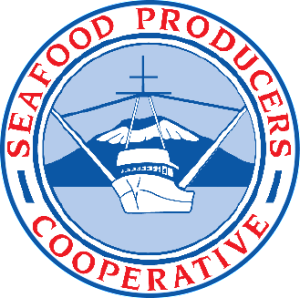
Seafood Producers Cooperative
Seafood Producers Cooperative is owned by over 575 members who fish the waters of the North Pacific. Each member is a small boat hook and line fisherman and owner of the cooperative, and therefore receives the benefits of ownership. Seafood Producers Cooperative serves families of small boat fishermen and the health of coastal communities by combining two alternative business models-the small family fishing boat and the cooperative. Their cooperative was founded to serve fishermen by getting the fairest price for their catch and giving them access to processing and packaging that they wouldn’t be able to achieve working on their own.
The co-op’s main processing plant is in Sitka, Alaska, although it has outports in other parts of Southeast Alaska, Washington and Northern California. The co-op’s business offices are in Bellingham, Washington.
Of Seafood Producers Cooperative’s members, 397 call Alaska home, and 216 of these have Sitka as their mailing address. Another 100 members winter in Washington while about 75 do so in Northern California. Some members winter in places as far away as Vermont and Florida. Many of their members fish with family, either as husband-wife teams, and/or with their children. Others hire deck hands while a number of their members fish alone, enjoying the special connection they have with the ocean.
 United Fishermen of Alaska
United Fishermen of Alaska
ufafish.org
United Fishermen of Alaska, UFA – includes 35 member associations and four at-large members, representing fisheries from throughout Alaska and the federal waters offshore. UFA also represents over 450 Lifetime, Business, Individual and Crew members. It is the statewide commercial fishing trade association, representing 35 Alaska commercial fishing organizations participating in fisheries throughout the state and its offshore federal waters.
United Fishermen of Alaska’s mission is to promote and protect the common interests of the Alaska commercial fishing industry, as a vital component of Alaska’s social and economic well-being. They strongly support state management of salmon fisheries and local management that is adaptive and abundance based.
Promoting positive relations between industry sectors is a huge focus for United Fishermen of Alaska . They also support all commercial gear types and remain neutral on allocative issues between commercial gear groups. UFA also protects the industry from attacks through initiatives, legislation, and other similar avenues. United Fishermen of Alaska opposes fish farming. They promote industry safety and healthy fishery resources by supporting research and habitat protection, along with supporting adequate funding for fishery research, management and enforcement.



